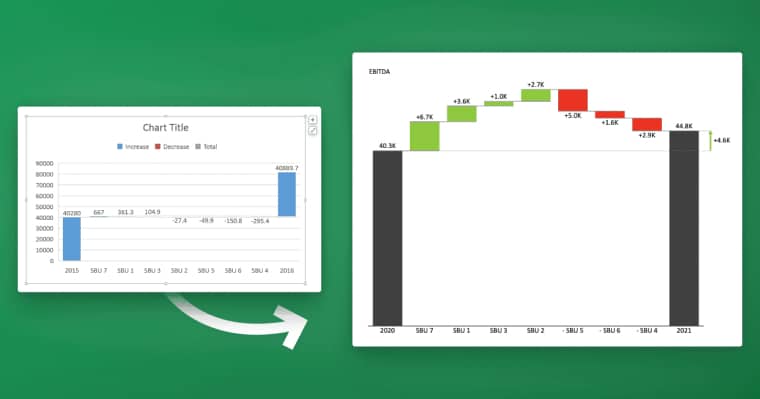Box plots are a type of graphical representation that is particularly useful for displaying numeric data. They are commonly used in statistical analysis to depict the distribution of data. They are also known as whisker plots, box-and-whisker plots, and box-and-whisker diagrams. In this article, we will explore the concept of box plots and provide you with a step-by-step guide on how to create box plots in Excel, along with some tips and tricks to help you create effective plots.
Table of Contents
Understanding the Concept of Box Plot
A box plot uses a rectangular box to represent the middle 50% of the data. The box has a dividing line that represents the median, and the two lines or “whiskers” extending from the box represent the minimum and maximum values of the data. The whiskers may extend to the minimum and maximum data points, or a specific distance from the box. The plot can also include individual data points that fall outside the whiskers, which are known as outliers.
Box plots are commonly used in statistical analysis to display the distribution of a dataset. They provide a quick and easy way to identify the range and distribution of the data, as well as any potential outliers. Box plots are particularly useful when comparing multiple datasets, as they allow for easy visual comparison of the central tendency and spread of each dataset. Additionally, box plots can be used to identify any skewness or asymmetry in the data, which can be important in certain types of analysis.
What is the Use of Box Plot?
Box plots are commonly used to display the distribution of data in a visually appealing and easy-to-understand manner. They are used to identify outliers, show the median and quartiles of the data, and compare the distributions of two or more data sets.
Box plots are also useful in identifying the skewness of the data. A box plot with a longer whisker on one side indicates that the data is skewed in that direction. This information can be helpful in making decisions about how to analyze or interpret the data.
Another advantage of box plots is that they can be used to compare the spread of data across different groups or categories. For example, if you have data on the test scores of students from different schools, you can use a box plot to compare the distribution of scores for each school and identify any differences in the spread of scores.
Types of Data Suitable for Box Plot
Box plots are particularly useful for displaying univariate data that is continuous in nature. They can also be used for comparing the distributions of two or more data sets.
Another type of data that is suitable for box plots is skewed data. Skewed data is data that is not evenly distributed around the mean. Box plots can help to identify the presence of outliers in skewed data, which can be useful in identifying potential errors or anomalies in the data set.
Box plots can also be used to display data that has multiple modes. A mode is a value that appears most frequently in a data set. When a data set has multiple modes, it can be difficult to visualize the distribution of the data using other types of graphs. Box plots can help to identify the presence of multiple modes and provide a clear visual representation of the distribution of the data.
Steps to Create a Box Plot in Excel
Here are the steps to create a box plot in Excel:
Preparing Data for Box Plot in Excel
The first step in creating a box plot in Excel is to prepare your data. Your data should be in a format that Excel can read. Make sure to label your data and remove any unnecessary columns or rows.
Selecting the Data Range for Box Plot in Excel
Once you have prepared your data, you will need to select the data range for your box plot. Click on the “Insert” tab in Excel and then click on the “Statistical Charts” icon in the “Charts” group. Select “Box and Whisker” from the drop-down menu.
Creating a Box Plot in Excel
To create a box plot, select the data range and go to the “Insert” tab. From the “Charts” group, select “Statistical Charts” and then “Box and Whisker”. Excel will automatically create the box plot for you.
Customizing the Appearance of Your Box Plot in Excel
You can customize the appearance of your box plot by changing the colors, fonts, and other formatting options. To customize the appearance, click on the chart to select it. Click on “Chart Tools” in the ribbon and then click on the “Format” tab. From here, you can choose from a variety of formatting options to customize the appearance of your box plot.
Adding Labels and Titles to Your Box Plot in Excel
You can add labels and titles to your box plot to make it easier to read. To add labels and titles, click on the chart to select it. Click on “Chart Tools” in the ribbon and then click on the “Layout” tab. From here, you can choose from a variety of formatting options to add titles, labels, and other text to your chart.
Interpreting and Analyzing Your Box Plot Results in Excel
Once you have created your box plot, it’s important to interpret and analyze the results. Look at the position and length of the box and the whiskers. Also, identify any outliers that fall outside the whiskers. You can compare the distributions of two or more data sets by creating multiple box plots and comparing them side-by-side.
Comparing Multiple Data Sets with Box Plot in Excel
To compare multiple data sets with box plot in Excel, you can create multiple box plots and display them side-by-side. Click on the “Insert” tab in Excel and then click on the “Statistical Charts” icon in the “Charts” group. Select “Box and Whisker” from the drop-down menu and choose “Box and Whisker Chart with Outliers” option.
Tips and Tricks for Creating Effective Box Plots in Excel
Here are some tips and tricks to help you create effective box plots in Excel:
- Choose a suitable scale for your axis.
- Use appropriate labels and titles for your chart.
- Customize the appearance of your chart to make it more visually appealing.
- Compare multiple box plots side-by-side to identify any differences in the data distributions.
Creating a box plot in Excel is a great way to visualize your data in a clear and easy-to-understand manner. Follow the steps and tips outlined in this article and you will be able to create effective box plots in Excel in no time!
Using Box Plots for Data Analysis in Excel
Box plots are a powerful tool for data analysis in Excel. They can help you identify outliers, compare data sets, and visualize the distribution of your data. You can use box plots to analyze data from a variety of fields, including finance, healthcare, and social sciences. By analyzing your data with box plots, you can gain insights into trends, patterns, and relationships that may not be immediately apparent from raw data.














